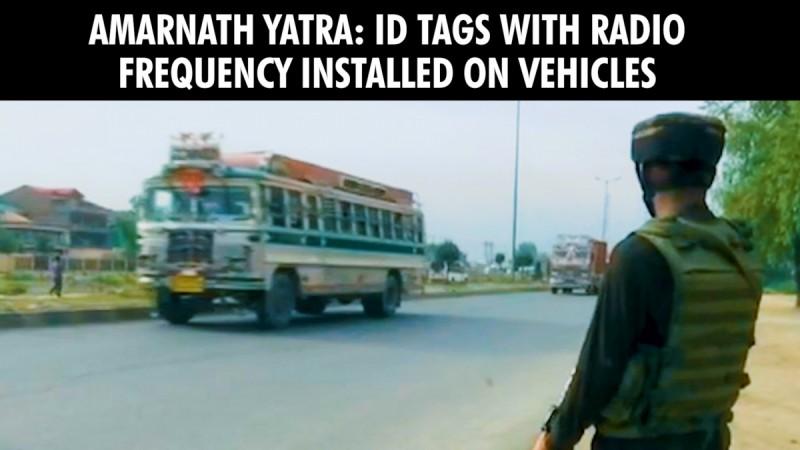The Central Reserve Police Force (CRPF) is taking no chances this year when it comes to the protection of devotees at the Amarnath Yatra. After last year's attack on an unescorted bus, the CRPF has adopted a high-tech solution this year - Radiofrequency Identification (RFID).
Each vehicle carrying devotees for the pilgrimage will be registered with an RFID tag, so they can be monitored 24x7 to ensure that there are no untoward incidents. The CRPF, in coordination with other state and Central agencies, has set up multiple Help Desks and Tourist Reception Centres to inform all incoming pilgrims about the move.
So far, 131 vehicles have been tagged with RFID. In order to ensure convenient and constant tracking, four sub-monitoring stations have been set up along different routes towards the shrine.
Two sub-stations are at Bemina and Bandha Chowk in Srinagar along with a centralised monitoring station that would function round the clock.
Devotees coming to Jammu and Kashmir for the 60-day long Amarnath pilgrimage are being alerted through different modes, including these Help Desks and announcements on flights landing at Srinagar so that they don't forget to tag their vehicles with the RFID device. The yatra ends on August 26.
Also, no vehicles carrying Amarnath yatris will be allowed to start from base camps at Pahalgam and Baltal after 2 p.m. in order to ensure that they reach Jawahar Tunnel, which connects Srinagar and Jammu, latest by 7 p.m.

Last year, on July 10, a bus carrying Amarnath pilgrims was attacked by terrorists on its way to Jammu from Baltal, resulting in the death of eight pilgrims and injuring many others.
As many as 33,600 CRPF personnel are already deployed in Jammu and Kashmir including 238 companies -- nearly 24,000 personnel -- of the paramilitary force especially to provide security along the route to Amarnath cave situated at an altitude of 3,888 meters.
An additional 2,530 personnel of other paramilitary forces are also deployed on Pahalgam and Baltal routes.
[With inputs from IANS]

















